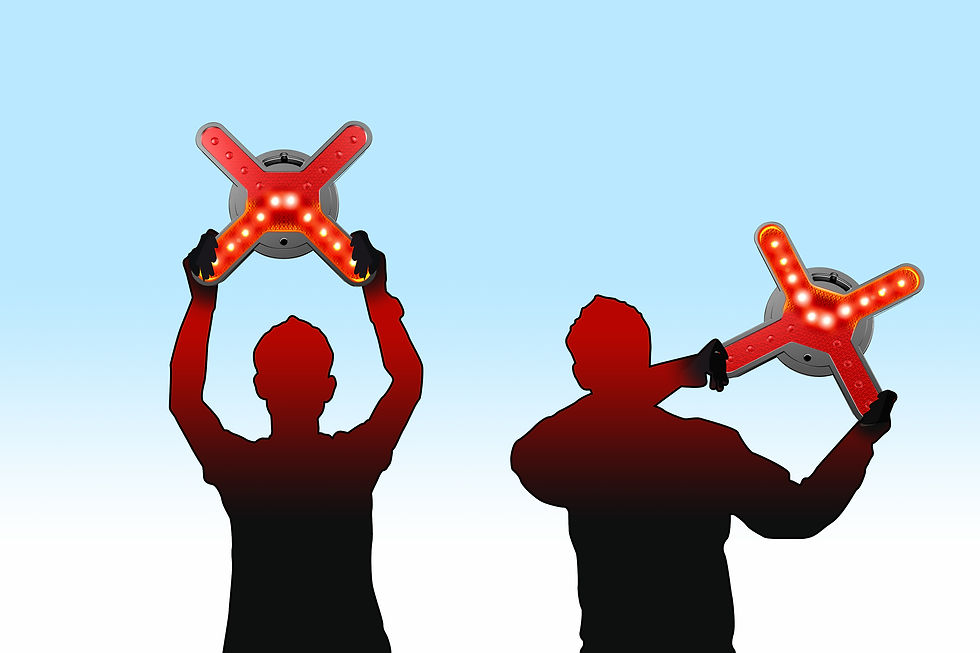
BETTER THAN
ANY HAND SIGNALS.
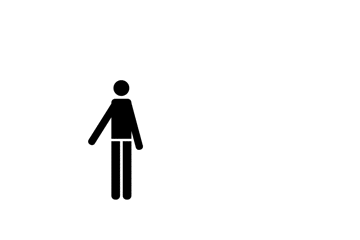
As standard, IWARN® enables pointing arrows to the left or to the right. When turning IWARN® by 90 degrees, they become directional indicators pointing up and down. This standardized signal allows indicating to a rescue helicopter pilot from a great distance whether or not he can land. (Arrow pointing up: “DO NOT LAND – DANGER!” / Arrow pointing down: “LANDING IS POSSIBLE”).
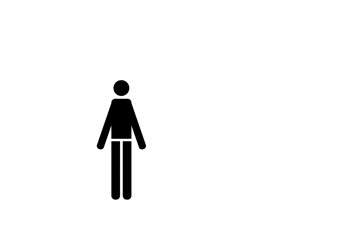

Risk of white-out on the helicopter’s landing.
RISK FROM "White OUT"
Snow whirled up by rotors on landing is a major problem for helicopters. In particular, this goes for rescue helicopter pilots who mostly have to land in unfamiliar terrain as close as possible to the accident victim. Time and again it happens that they cannot recognise obstacles on the ground when they are landing, the reason being a phenomenon known as white-out. In the last phase prior to landing, the pilot can’t see anything and orientate himself in airspace as he may not be able to identify distinctive points of reference any longer. Even experienced pilots have to rely on their feeling in this phase when they are going down smoothly the last few feet. The marshalling helpers on the ground (members of mountain rescue services, for example) try to help pilots and act as reference points by getting on their knees right in front of the helicopter cockpit. IWARN® allows improving this procedure significantly: the rescuer is holding IWARN® in his hand and points the light beam towards the helicopter. Owing to its strong light, IWARN® can shine through the snowstorm and offers the pilot a reliable point of reference.

RISK FROM
"BROWN OUT"
Like in case of snow, landing in sandy areas causes the same problems. This phenomenon is called brown-out. Apart from the risk of poor visibility swirling sand entails also other risks. It is sucked in by the jet engines and may cause serious damage to the engine and even make it stop. Brown-out led to numerous crashes of military helicopters during operations Desert Storm 1 and Desert Storm 2 in Iraq. Even when landing in swirling sand (especially at night), IWARN® will provide better visibility for pilots.
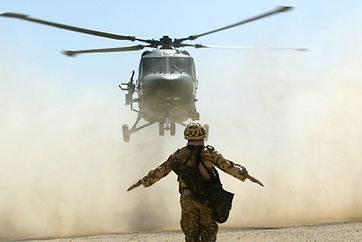


MARSHALLING BY
RESCUE ORGANISATIONS
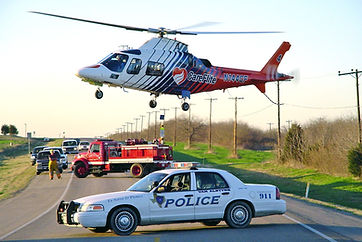
Time and again, rescue services have to cordon off roads to enable the safe landing of a rescue helicopter. IWARN® is the perfect tool for police officers, ambulance men, firefighters, mountain rescuers and helpers from technical emergency services (e.g. THW, the German Federal Agency for Technical Relief) to marshal a helicopter precisely using a light signal and to provide optimum assistance for landing.

LANDING SITE
IWARN® is the ideal tool to set up beacons within minutes to create a mobile helipad. To that end, several IWARN® devices are arranged in a circle. To prevent them from being blown away by the strong downwash of the helicopter, they can be fixed to the ground using tent pegs or ground nails and the standard carabiner lug of IWARN®.
For undercover missions, it is possible to equip IWARN® with infrared light so the light beam can be seen by a pilot wearing night vision goggles but it can’t be seen by other persons.




